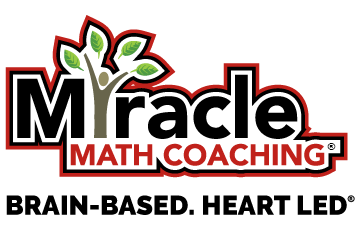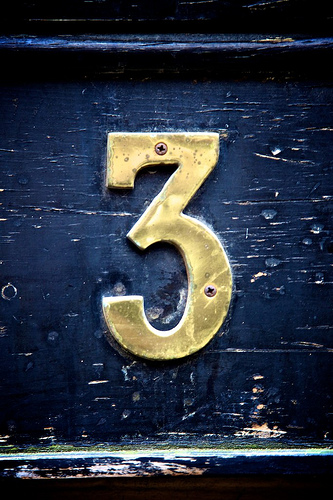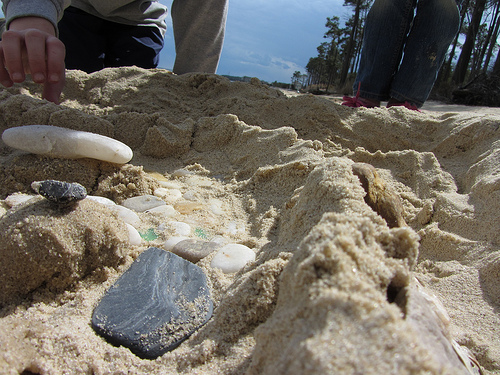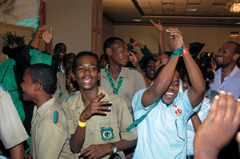Are You Smarter than an 8th Grader?
I was surprised when I came across an 8th grade Math test from the year 1912. Students who nailed this exam could probably teach in today’s middle schools. The questions gave me a headache, and I’m a mathematician.
I’ll spare you the really hard questions. Can you answer the three below? The answers are at the end of this post.
And if you’re a tiny bit anxious just thinking about this mini quiz, your child might be at a disadvantage learning Math. More on that after the questions.
Question #1: Write the following numbers in words.
(As an example, .005 = five-thousands.)
.5764 =
.000003 =
.123416 =
653.0965 =
43.37 =
Question #2: A man sold a watch for $180 and lost 16? percent. What was the cost of the watch?
Question #3: Find the total cost of painting a room if the paint costs 12½ cents per sq. yd. and the room is 20 ft. long, 16 ft. wide and 9 ft. high, deducting 1 door 8 ft. by 4 ft 6 in. and 2 windows 5 ft. by 3 ft. 6 in. each.
Tough, right? But if you think your own Math skills – or lack, thereof – affects how well your child does in the classroom, you’re wrong.
Researchers at the University of Chicago found that it’s not the Math ability of parents that impacts how well their children do. The culprit is the parents’ anxiety.
Specifically, students whose “Math-anxious” parents help them with homework put their kids at a disadvantage.
“We often don’t think about how important parents’ own attitudes are in determining their children’s academic achievement,” said Professor Sian Beilock, one of the authors of the study. “But our work suggests that if a parent is walking around saying ‘Oh, I don’t like math’ or ‘This stuff makes me nervous,’ kids pick up on this messaging and it affects their success.”
So what’s the lesson for parents who want their children to ace Math? Simply chill out.
Just keeping your anxieties to yourself will do a world of good. Encouraging your child is important in life in general. But it’s especially important when your young ones are tackling a subject they feel uncertain about.
And don’t be afraid or intimidated to learn more about academic coaching. Students sometimes learn more from an outside professional than from Mom or Dad helping them.
For example, you’d think that as a Mathematician and executive director of Miracle Math I’d be the best person to coach my own daughter in Math. Nope.
I’ve enrolled my daughter into our program, and it truly has made a difference.
And contrary to what you might think, academic coaching is affordable. As a wife and Mom, I know first-hand the challenges of balancing a family budget. For that reason, our tuition is completely dependant upon your goals and your ability to pay; we offer academic coaching packages of varying costs so you can choose the one you can afford.
To find out if Miracle Math Coaching is for you and your family, just click here www.MiracleMathCoaching.com and schedule a FREE evaluation with me today. Miracle Math Coaching is an award-winning, student-focused service with a track record of boosting academic achievement.
Answer to Question 1:
.5764 = five thousand seven hundred sixty-four ten-thousandths;
.000003 = three millionths;
.123416 = one hundred twenty-three thousand four hundred (and) sixteen millionths;
653.0965 = six hundred fifty-three and nine hundred sixty-five ten-thousandths;
43.37 = forty-three and thirty-seven one-hundredths.
Question #2: A man sold a watch for $180 and lost 16? percent. What was the cost of the watch?
The solution is to divide the sale price of $180 by .833 [100% – 16.67% = 83.3% or .833]. Thus 180 ÷ .833 = 216.086 or $216.09 rounded to the nearest cent.
Question #3: Find cost at 12½ cents per sq. yd. of painting the walls of a room 20 ft. long, 16 ft. wide and 9 ft. high, deducting 1 door 8 ft. by 4 ft 6 in. and 2 windows 5 ft. by 3 ft. 6 in. each.
The two long walls are 20′ by 9′ or 180 square feet each. The other two walls are 16′ by 9′ or 144 square feet each. The door space to be deducted is 8′ by 4.5′ or 36 square feet. The two window spaces to be deducted are 5′ by 3.5′ or 17.5 square feet each. Thus we have (180 × 2) + (144 × 2) – 36 – (17.5 × 2) which reduces to 360 + 288 – 36 – 35 or 648 – 71 = 577 square feet.
Since a square yard = 9 square feet, we divide 577 by 9 and get 64.1 square yards. At 12.5 cents per square yard, the cost will be $8.01, rounded to the nearest cent.







